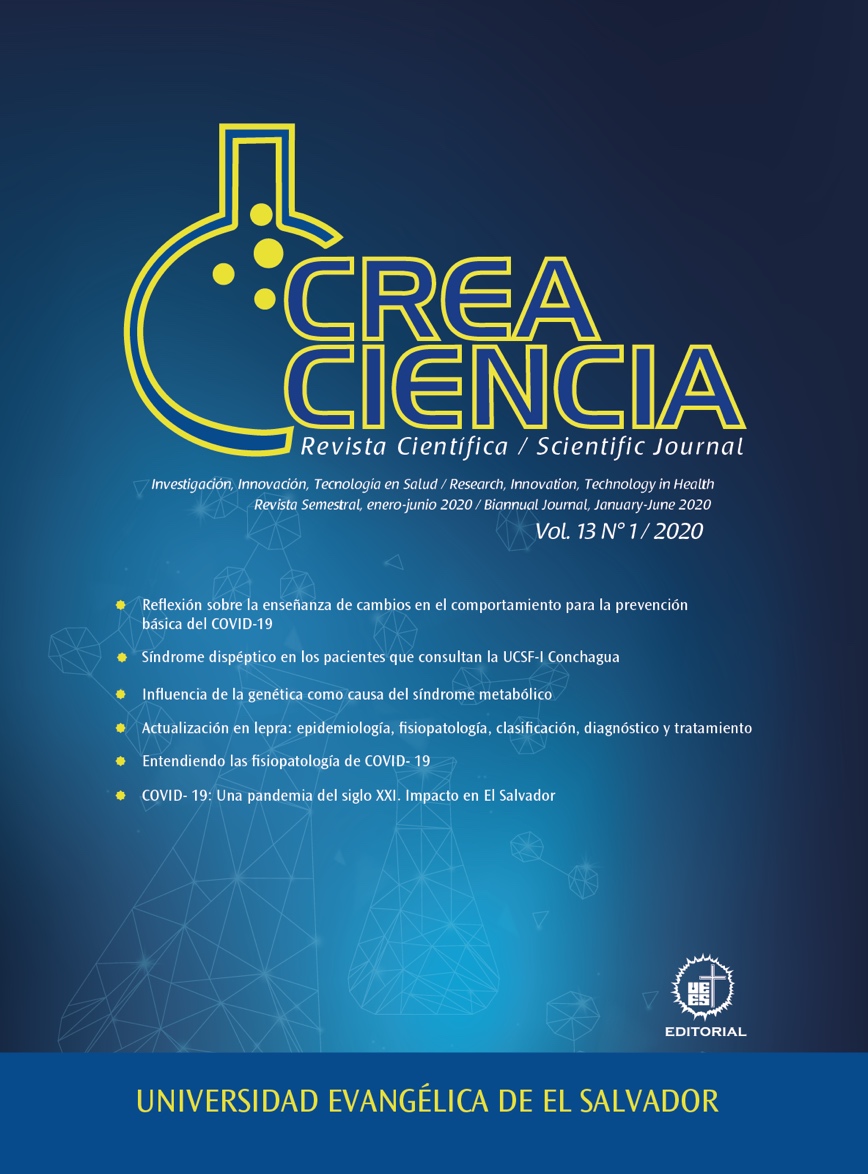Reflection on the teaching of changes in behavior for the basic prevention of COVID-19
DOI:
https://doi.org/10.5377/creaciencia.V13i1.10460Keywords:
Higher Education Institutions, virus, COVID-19, El SalvadorAbstract
Currently, approximately 27.6 million cases and an estimated 898,000 deaths from COVID-19 are reported worldwide. In El Salvador, the figures are also high, 26,602 cases and 775 deaths. For their part, Universities as Higher Education Institutions (HEIs) they have social responsibility and, in addition, as part of their substantive functions, they must promote reflective spaces to create a preventive and health promotion culture. Thus, information on new characteristics of the pathophysiology of infection by this virus, daily throw new data that with the days are reaffirmed or discarded. In the same way, myths continually arise in relation to its spread and forms of prevention: «Surgical masks or others such as N-95 cause carbon dioxide poisoning or lack of oxygen» (N95 masks duly approved by regulatory bodies such as the National Institute for Occupational Safety and Health (NIOSH)
properly fitted to the face can protect against aerosols released by talking or coughing, but do not interfere with breathing oxygen) "Heat stops the spread of the virus" (although heat reduces the survival of the virus, environmental heat in itself does not protect from infection under the right conditions for person-to-person infection to be effective), “5G mobile networks spread the virus”.
Downloads
Published
Issue
Section
License
Copyright (c) 2022 Journal Creates Specialized Science in Health Areas

This work is licensed under a Creative Commons Attribution-NonCommercial-ShareAlike 4.0 International License.
Los artículos de Crea Ciencia están publicados en acceso abierto bajo una licencia CC BY-NC-SA 4.0 de la Universidad Evangélica de El Salvador.





















